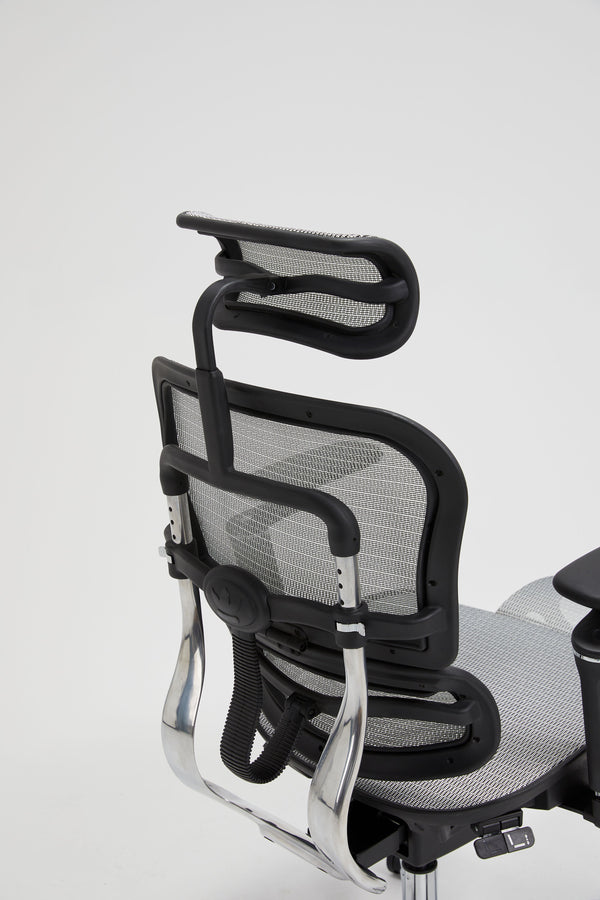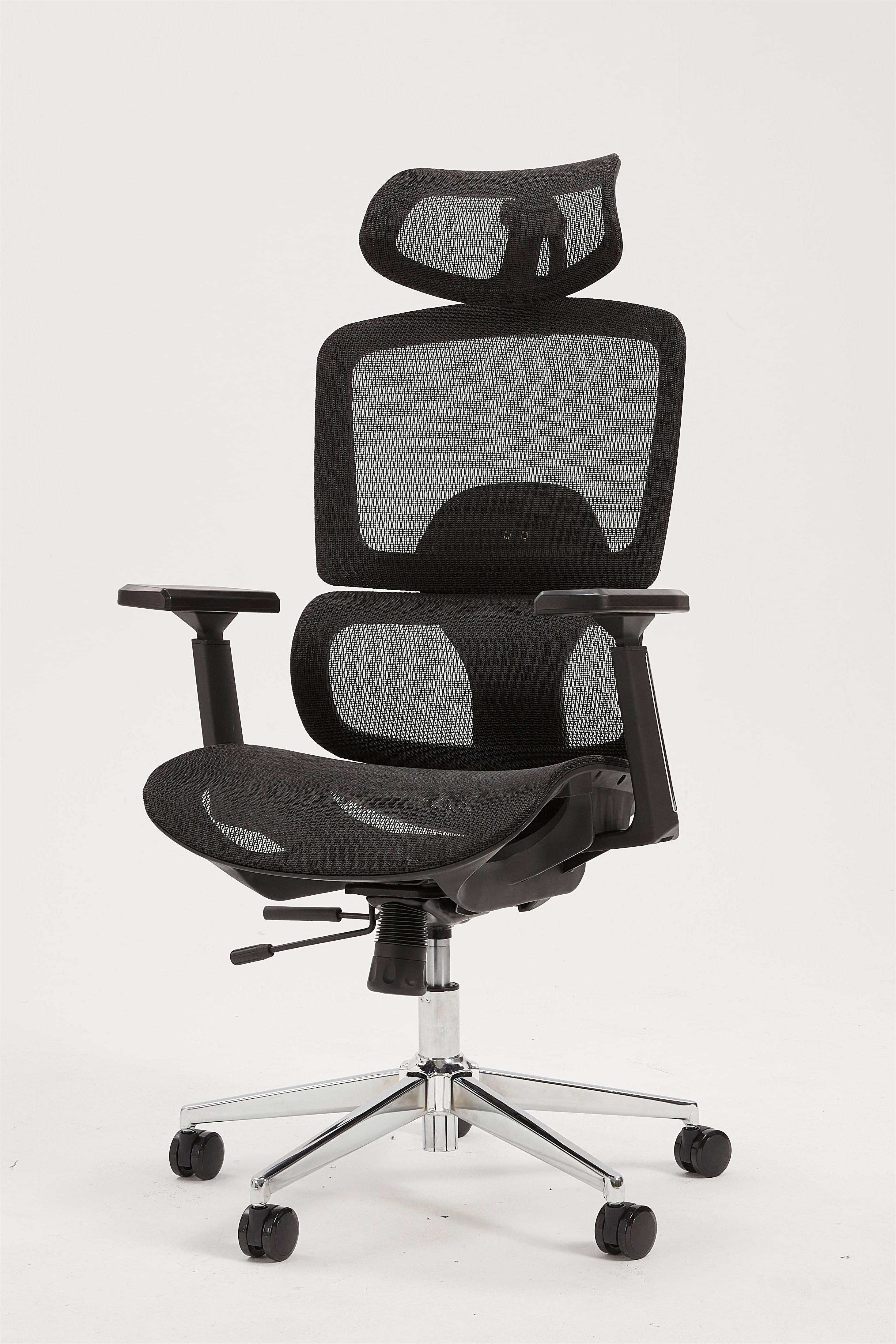The Ultimate Guide to Ergonomic Chairs: Why Your Back Will Thank You
In today’s fast-paced digital world, many of us spend hours glued to our desks—working, studying, gaming, or binge-watching shows. But while our minds stay busy, our bodies often pay the price. Slouching, neck strain, and lower back pain have become common complaints, and poor seating choices are often the culprit. Enter ergonomic chairs: the unsung heroes of modern comfort and productivity. In this blog, we’ll explore what makes ergonomic chairs unique, why they matter, and how to choose the best one for your needs.

What Are Ergonomic Chairs?
Ergonomic chairs are purposefully designed to support the human body’s natural posture and movement. Unlike traditional chairs, which prioritize aesthetics or affordability, ergonomic models focus on adjustability, comfort, and long-term health benefits. The term “ergonomic” comes from the Greek words ergon (work) and nomos (laws), essentially meaning “the science of efficient and safe work environments.”
Key features of ergonomic chairs include:
- Adjustable seat height: Ensures feet rest flat on the floor, reducing pressure on thighs.
- Lumbar support: Curves to match the spine’s natural S-shape, preventing slouching.
- Armrests: Adjustable in height and width to relieve shoulder tension.
- Seat depth: Customizable to fit leg length, improving circulation.
- Reclining mechanisms: Allow users to lean back comfortably without straining the neck.
- Breathable materials: Mesh or cushioning that minimizes heat buildup during long sittings.
Why Ergonomic Chairs Matter: Health Beyond Comfort
Sitting for prolonged periods is often called “the new smoking” due to its links to obesity, cardiovascular issues, and musculoskeletal disorders. Ergonomic chairs combat these risks by promoting active sitting—a concept that encourages subtle movements and proper alignment. Here’s how they make a difference:
1. Prevent Chronic Pain
Poor posture strains muscles and spinal discs. A 2020 study in the Journal of Occupational Rehabilitation found that employees using ergonomic chairs reported 30% less lower back pain compared to those in standard office chairs. The adjustable lumbar support keeps the spine neutral, while armrests reduce tension in the shoulders and wrists.
2. Boost Productivity
Discomfort is distracting. When you’re constantly shifting to relieve pressure points, focus dwindles. Ergonomic chairs minimize discomfort, allowing you to work longer without fatigue. A Cornell University study noted a 17% increase in productivity among workers with ergonomic setups.
3. Enhance Circulation
Flat, rigid seats can compress blood vessels in the thighs, leading to numbness or swelling. Ergonomic chairs with waterfall-edge seat designs (gently sloping downward) improve blood flow to the legs.
4. Reduce Long-Term Healthcare Costs
Investing in ergonomic furniture isn’t just about comfort—it’s a financial decision. The U.S. Bureau of Labor Statistics estimates that musculoskeletal disorders cost businesses $15 billion annually in lost productivity and medical bills. Ergonomic chairs mitigate these expenses by keeping employees healthy.
How to Choose the Right Ergonomic Chair
Not all ergonomic chairs are created equal. Here’s a step-by-step guide to finding your perfect match:
1. Assess Your Needs
- Usage: How many hours will you sit daily? Gamers and remote workers may need high-end models with extra cushioning.
- Body Type: Tall users require deeper seats and higher backrests; petite users benefit from compact designs.
- Health Concerns: Prioritize lumbar support if you have back issues or headrests for neck pain.
2. Test Adjustability
A chair’s value lies in its adaptability. Look for:
- Seat height adjustment: Your knees should form a 90-degree angle.
- Armrest mobility: They should align with your desk height to prevent shoulder hunching.
- Tilt tension control: Adjust resistance to match your weight for smooth reclining.
3. Prioritize Material Quality
- Mesh: Lightweight and breathable, ideal for hot climates.
- Memory foam: Conforms to your body but may retain heat.
- Leather/PU: Luxurious but less breathable; requires maintenance.
4. Don’t Skip the Warranty
High-quality ergonomic chairs often come with 5–12-year warranties. Brands like Herman Miller and Steelcase are renowned for durability and customer support.
Common Myths About Ergonomic Chairs
Let’s debunk a few misconceptions:
-
“They’re only for office workers.”
False! Gamers, students, artists, and even drivers benefit from ergonomic support. -
“Expensive chairs are a scam.”
While budget options exist, premium chairs use higher-grade materials and engineering. Think of it as a long-term health investment. -
“Once you buy one, posture fixes itself.”
Ergonomic chairs aid proper alignment, but users must still practice mindful sitting habits.
Conclusion: Sit Smart, Live Better
Ergonomic chairs aren’t a luxury—they’re a necessity in our sedentary lifestyles. By aligning with your body’s biomechanics, they protect your spine, enhance focus, and even extend your career longevity. Remember, the best chair is one that you forget you’re sitting in—because it’s doing its job perfectly.
So, whether you’re working on a novel, crunching spreadsheets, or conquering virtual worlds, give your body the support it deserves. Your future self will thank you!



Commenta
Questo sito è protetto da hCaptcha e applica le Norme sulla privacy e i Termini di servizio di hCaptcha.